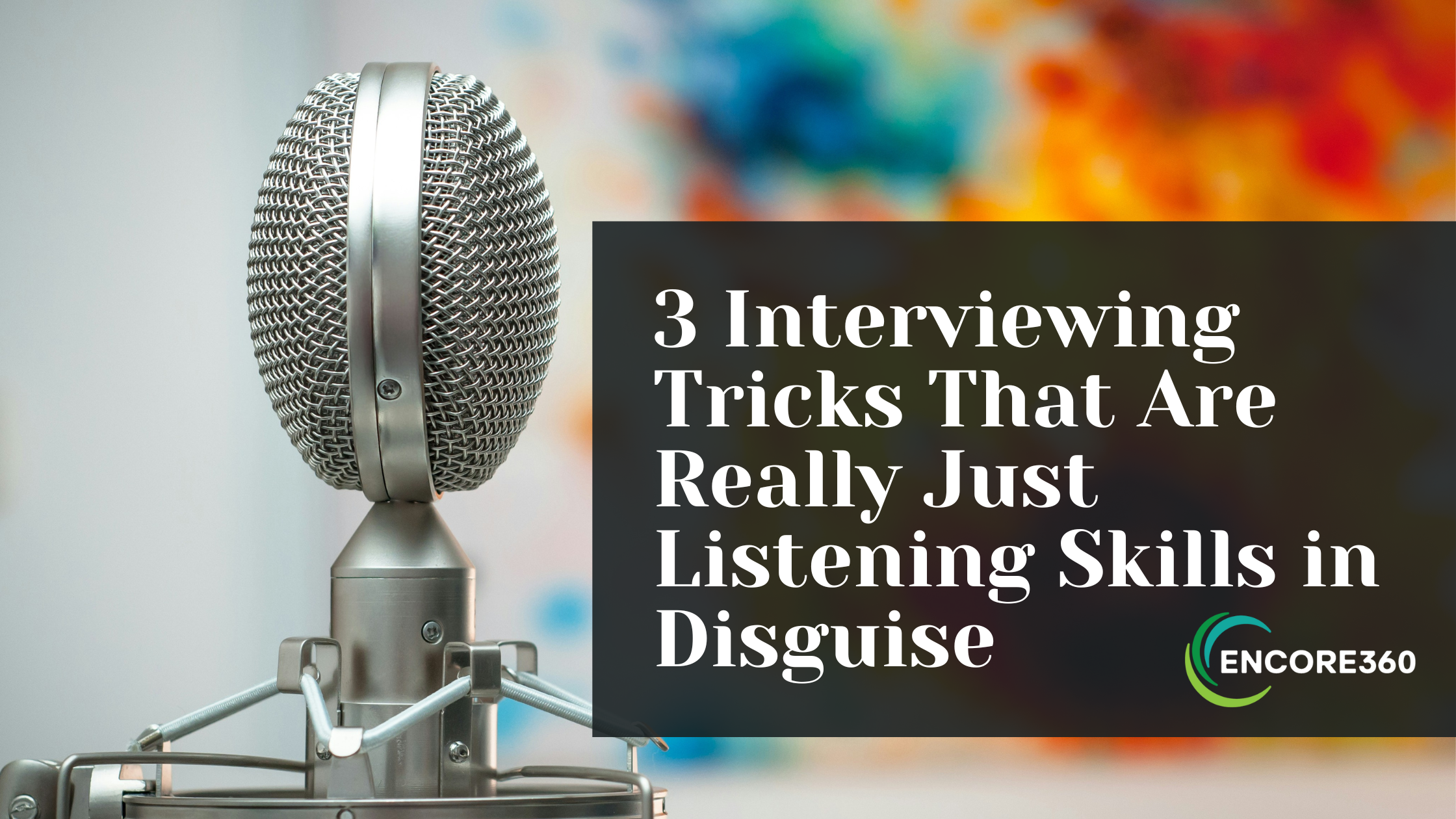We all know interviews are the engine behind good content. A sharp Q&A can power a blog, a podcast, a social post, even a keynote. But here’s where it often falls apart: we spend so much time preparing questions, we forget to actually listen.
And not just “nod-and-smile” listening. I mean active, curious, human listening. The kind of listening that earns trust and uncovers something real.
You’ve heard the basics: make eye contact, don’t interrupt, repeat back what you heard. Fine. But if you want your interviews to lead to something better—something worth reading—you have to tune in a little deeper.
Here are three odd little habits I’ve picked up over the years. They might feel weird at first. But they work because they turn your interview from a content-gathering task into a relationship.
1. Ditch the Full Question List
The fastest way to flatten an interview is to follow a script. Sure, write down your goals. Know what you hope to ask. But don’t cling to the list like a lifeline. Open with a broad, real question—and then shut up and follow where they take it.
A list is useful until it stops you from hearing what someone actually said. Your job isn’t to steer the ship. It’s to follow the current.
Some of the best stuff comes when your interviewee forgets it’s an interview. When the pressure’s off, people open up—and that’s when you find the gold.
2. Let Silence Do the Work
Most people rush to fill a quiet moment. Don’t. Let it hang.
After someone finishes an answer, try pausing—count to three in your head. You’d be amazed how often that extra breath gives someone permission to go deeper. They’ll add the detail they almost left out, or pivot to the thing they really meant to say.
Silence tells them you’re actually listening. Not waiting to talk. Just there. And that changes the tone of the whole exchange.
3. Listen for What’s Missing
Pay attention not just to what they say but what they skip.
That awkward pause when they mention a mistake. The quick gloss-over when they bring up a hard year. The faint pride in something they don’t quite name.
These are the moments that want a second look. Try gently calling it out: “It sounds like that was tough—what happened there?” Or: “You moved past that win pretty quickly. Can we slow down and talk about it?”
People notice when you catch what others miss. That’s how trust gets built. And that’s what turns a decent quote into something meaningful.
Conclusion
A good interview is not a checklist. It’s a somewhat artificial conversation with stakes.
If you want your content to resonate, you need more than soundbites. You need perspective. Empathy. A sense that someone’s really listening.
That’s what earns the next call. That’s what builds relationships. And that’s what drives the kind of content that gets remembered—because it was built on something true.
